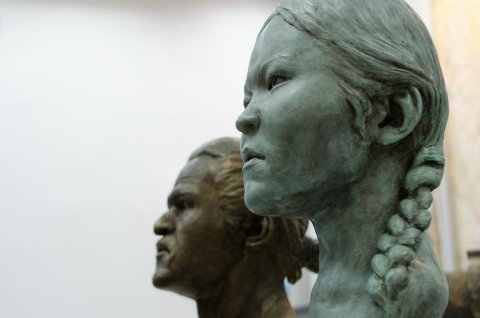Today, a 10-year project on creating a gallery of the people of the South Ural Region at the SUSU museum Peoples and Technologies of the Urals has wrapped up. Right now, our University is the owner of the largest collection of anthropological reconstructions of the ancient people of the region.
“As far as I know, this project is without precedent. Across the regions of the Russian Federation, no one has ventured to complete such a gallery with the exclusion of the Gerasimov Anthropological Laboratory of the Russian Academy of Science in Moscow. There, the reconstruction gallery is much larger, and it includes all of Russia and nearby countries and republics. We have created a gallery for a concrete area, the South Ural Region, which covers 6 centuries,” explains the leading researcher of the SUSU Scientific and Educational Center of Eurasian Studies, Doctor of Historical Sciences, Professor Sergey Botalov.
Aleksey Nechvalod, anthropologist, researcher of the Institute of History, Language, and Literature of the Ufa Scientific Center of the RAS, brought the last two reconstructions from Ufa created from remains found in the Kustanai Region. The remains are located on the boundary of eras – 1st century BC and 1st century AD. This was an Alanian pair from a single burial, where they found the remains of a man, woman, and child. These last reconstructions completed the formation of the museum’s exhibit.

“Anthropological material is mute until it is in the hands of a specialist. Anthropologists can both measure a skull using a special instrument, determine race, age, and gender, and also restore the physical appearance using Gerasimov’s methods. Facial reconstruction bring the exhibits to life with models that give us a chance to see ancient man. In this reconstruction, the man is part of the Caucasoid race, the woman – of mongoloid. They were buried together and are a couple, which was unexpected,” says Aleksey Nechvalod.
In the future, the exhibit will be expanded and modernized. They are planning on completing a reconstruction in real time and doing a 3D scan. In addition, a separate exhibit for the gallery of the Uelgin buried remains is planned.




